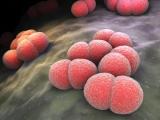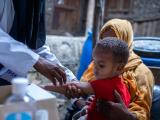Jan 3, 2013
NIH signs off on final Boston biolab risk assessment
In a move that removes another hurdle for a controversial biosafety level 4 (BSL-4) lab at Boston University, the National Institutes of Health (NIH) yesterday reaffirmed its original decision that the lab poses minimal risk to the surrounding community, the Boston Globe reported. The NIH posted its decision in the Federal Register. The decision clears the way for Massachusetts to conduct a final environmental review, according to the Globe. The lab has been built, but only BSL-2 work is being conducted in a portion of it. The BSL-4 part of the lab has been held up by safety concerns from residents in the lab's neighborhood and National Academies of Sciences (NAS) criticisms of the NIH's risk assessment of the facility. In December 2011 the NAS evaluated the NIH's revised risk assessment and noted vast improvements. Opponents, however, say there are still gaps in federal safety assessments, according to the Globe.
Boston University spokeswoman Ellen Berlin told the Globe that if the lab clears its other hurdles it could open at the end of 2013 or in early 2014. Lawsuits filed by neighborhood and environmental groups must also be resolved.
Jan 2 Boston Globe story
Jan 2 Federal Register notice
Dec 15, 2011, CIDRAP News scan "NAS cites improvements in Boston biolab review"
Lab-worker survey finds safety perceptions may differ from practice
Although 86% of almost 2,400 international scientists surveyed said their labs were safe places to work, 46% reported an injury at work and about two-thirds reported that staff worked alone at least several times a week, a practice that raises health risks should an accident occur. As reported yesterday in Nature News, the survey of workplace beliefs and practices, conducted by the University of California, Los Angeles' Center for Laboratory Safety, is the most comprehensive of its kind to date. Most respondents were from the United States and United Kingdom, with some from Europe, China, and Japan. Most reported injuries were minor—such as cuts, lacerations, and needle pricks—but 30% of respondents said they had witnessed at least one "major" lab injury, defined as requiring medical attention. The survey also found that senior scientists tend to perceive their labs as safer than do junior lab workers. Although
the survey was not randomized and was rather sweeping, with 100 questions, experts said it was a good starting point for investigating lab-safety issues. "This survey is a baseline study that leaves more questions than answers, but a perception survey is supposed to raise questions that need to be looked at," said Lou DiBerardinis, head of health and safety at the Massachusetts Institute of Technology.
Jan 2 Nature News report
Report details invasive meningitis cluster in NYC
In an investigation into a cluster of invasive serogroup C Neisseria meningitidis disease (SCMD) in men who have sex with men in the New York City area, the US Centers for Disease Control and Prevention (CDC) and state partners today urged public health departments to be alert for similar cases in similar populations to determine if the outbreak is spreading to other areas. Scientists from the New York City Department of Health and Mental Hygiene and the CDC described their findings today in Morbidity and Mortality Weekly Report (MMWR). As of Dec 31, public health officials had identified 18 cases that have occurred since August 2010. Five deaths were reported, and 10 of the men were infected with HIV. Eleven of the isolates were closely related to a strain from a 2006 SCMD outbreak in Brooklyn. At least seven of the patients had met multiple sexual partners online. New York City health officials have targeted vaccination
and prevention efforts to high-risk populations in areas where the cases have clustered.
Jan 3 MMWR report


















